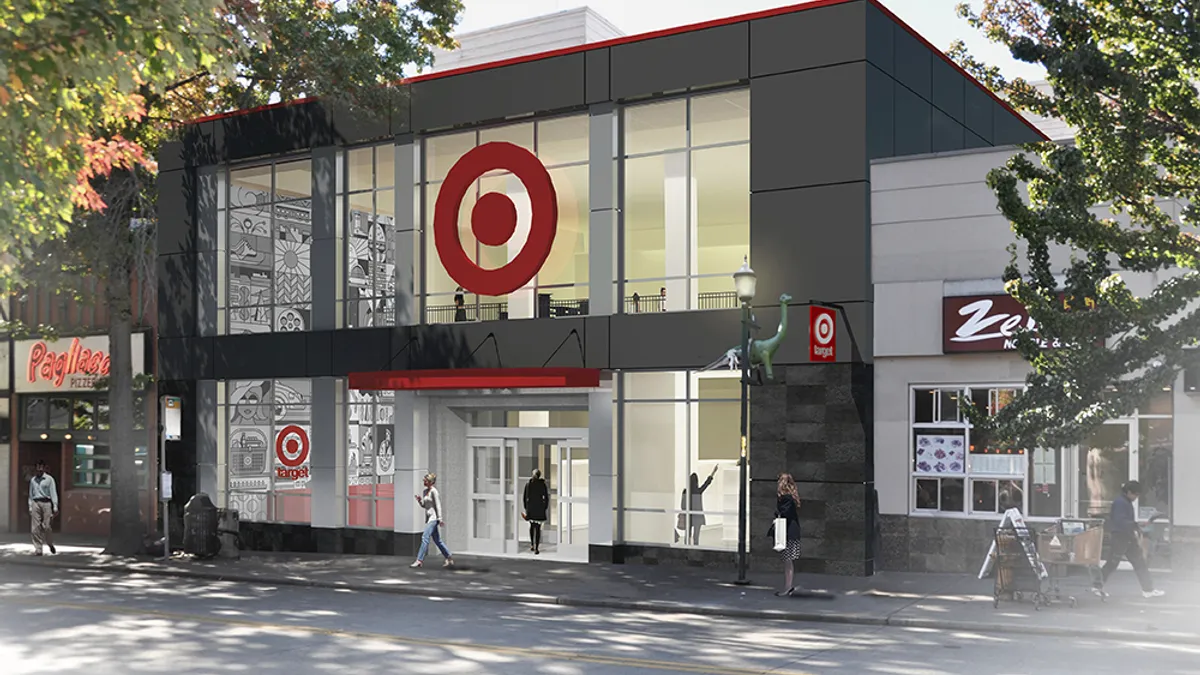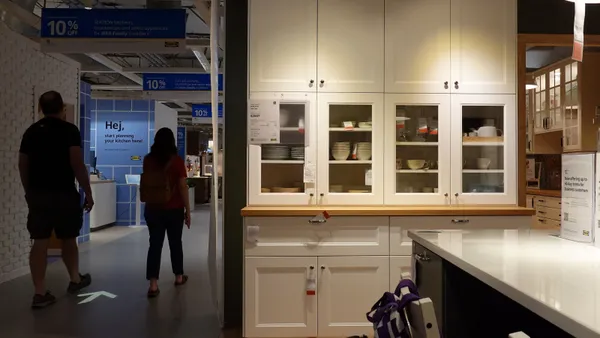Dive Brief:
- Target's same-day fulfillment services, which include in-store pickup, drive-up and Shipt same-day delivery, now account for more than one-third of the retailer's total fulfillment and are growing at twice the rate of last year, executives said on the Q2 earnings call.
- "Because these options leverage our store infrastructure, technology and teams, same-day fulfillment delivers outstanding financial performance," Target CEO Brian Cornell said on the call. Same-day fulfillment services accounted for 1.5% of the retailer's sales growth.
- Store-based fulfillment has led to higher productivity rates for Target as well, according to COO John Mulligan. The average productivity for store-fulfilled sales was $300 per square foot. "When you do the math, every additional $1 billion of store fulfilled sales would raise that productivity by about $4 a foot," Mulligan said.
Dive Insight:
For several quarters in a row, Target's message has been clear: Fulfilling orders from stores works.
"When we started, many people questioned whether store should play a central role in digital fulfillment," Mulligan said. "Our team has delivered the performance that has converted doubters into believers."
Target's shift of fulfillment from upstream distribution centers to stores decreased costs by 40%, and for same-day options the cost reduction is 90%. At the same time, efficiency has increased. Since the beginning of 2018, order picking efficiency for Target's pickup and drive-up fulfillment options and "end-to-end labor efficiency" with Shipt rose more than 30%, Mulligan said.
The store-centric strategy not only increases efficiency and reduces operational cost for the retailer, it enables fast fulfillment and convenient options for consumers, eliminating concerns around package theft or what to do with piles of cardboard boxes. The same-day services "are quickly becoming the preferred fulfillment choices for our guests," Cornell said.
Part of the reason Target can succeed with the store-based fulfillment model is its vast brick-and-mortar presence. The retailer has 1,855 stores in the U.S. "For Target, this strategy works given the locally-curated stores, making shipments from those stores for items ordered online in those local markets efficient," Moody's Vice President Charlie O'Shea told Supply Chain Dive.
Still, analysts question the long-term viability of fulfilling orders from stores at scale — whether stores can fulfill increasing digital sales volume with the existing square footage and store layouts.
"Our internal modeling shows that we are not going to run up against any capacity constraints in the near term," Mulligan said, though he added the caveat that some space constraints could be an issue during peak season, but only if the retailer's productivity remain the same. "And that isn't our plan," he said, adding further investment in "technology and processes" will make room for peak volume.
Even as store fulfillment grows, Mulligan acknowledged the retailer will still need to invest in upstream capacity to cope with overall growth.















